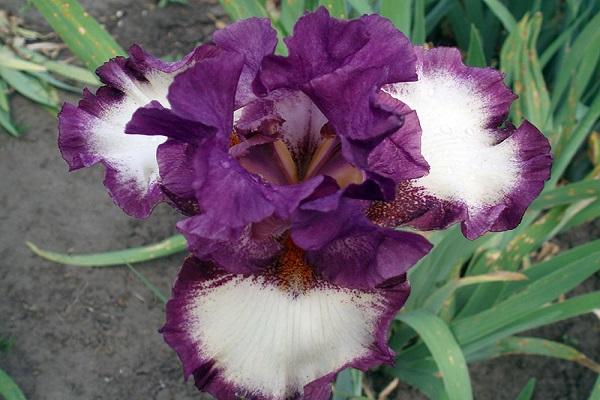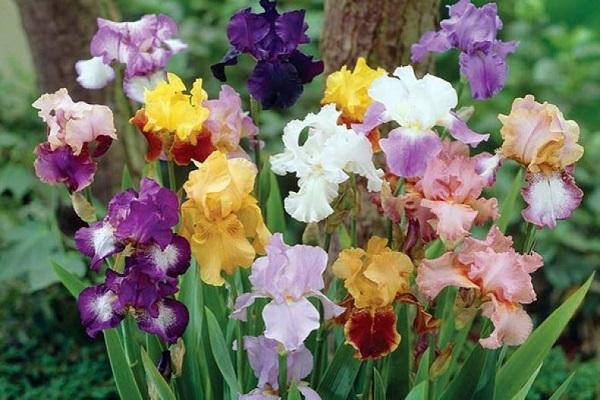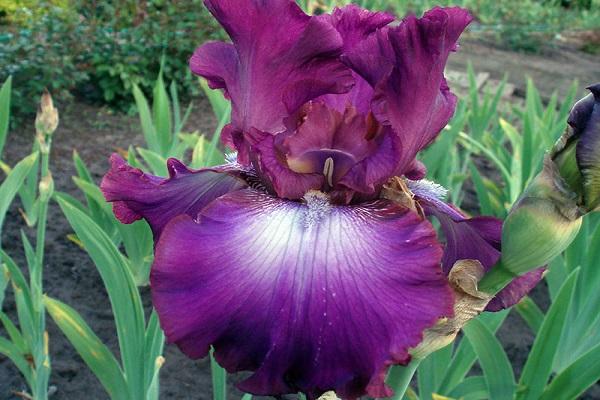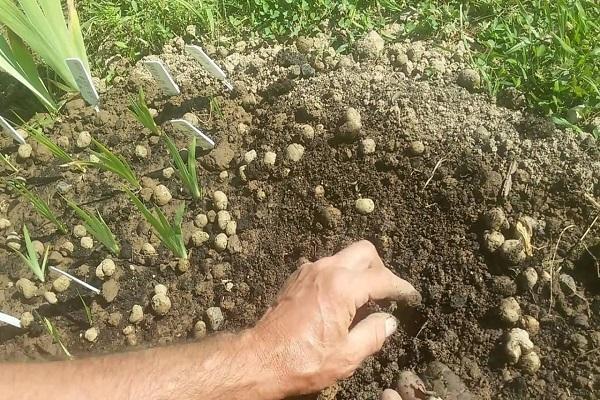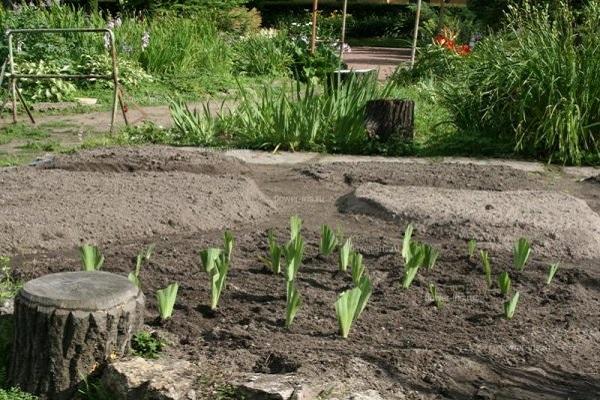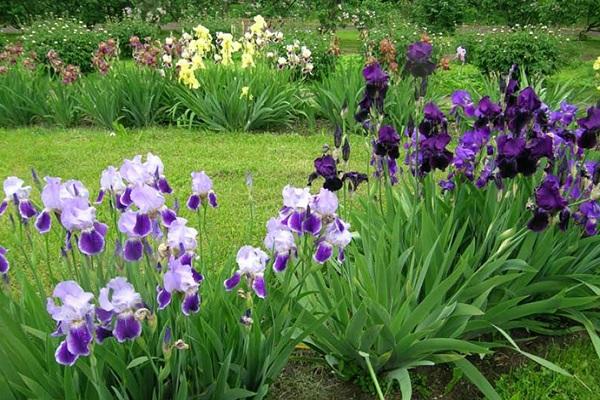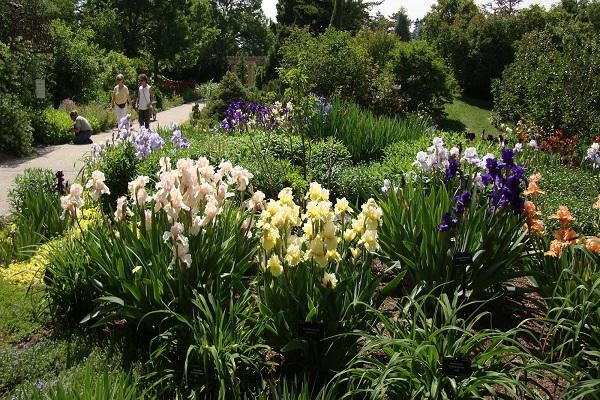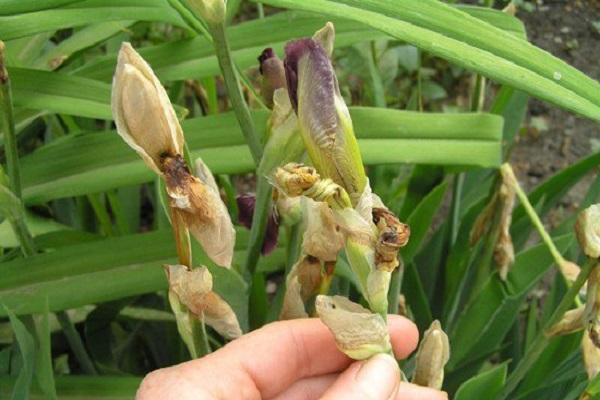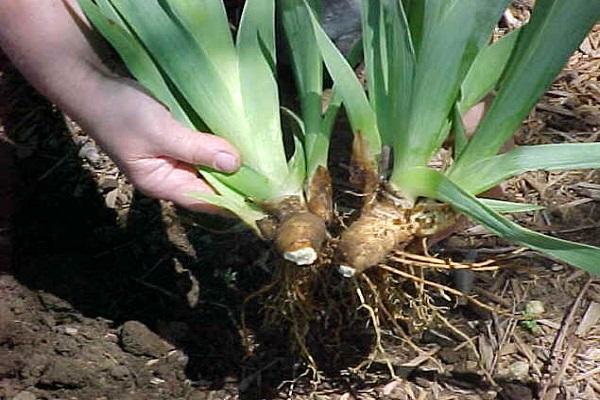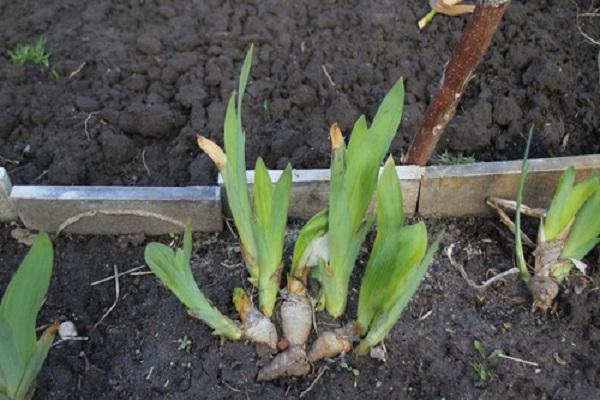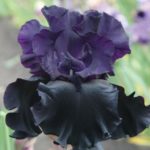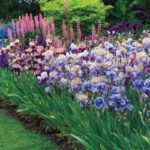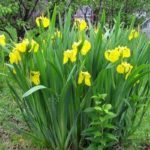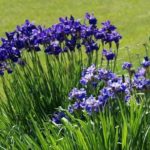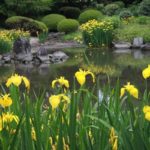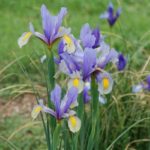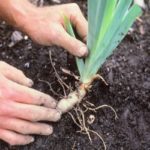A beautiful flower bed is a decoration for any garden plot. Selecting the right plants is half the success. Summer residents should take a closer look at the bearded iris, an unpretentious perennial plant that pleases with its flowers for a long time.
- Characteristics and description of the bearded iris
- Popular varieties
- Planting rules
- Preparation of planting material
- Landing dates
- Choosing a place to grow
- Landing technology
- Features of caring for a bearded iris
- Temperature
- Watering
- Plant nutrition
- in spring
- In summer
- in autumn
- Pruning after flowering
- How and when to replant
- Preparing for winter
- Pests, diseases and methods of controlling them
- Propagation of irises
- Possible problems during cultivation
Characteristics and description of the bearded iris
The flower got its name because it has bristly growths on its bent petals. On some representatives, the outgrowths especially closely resemble a beard.
The unpretentiousness of the plants has allowed them to gain popularity among gardeners. When forming flower beds, summer residents use irises for the reason that they bloom between the spring and autumn representatives, that is, in the summer.
The rhizomes of this category of plants sometimes protrude outward. The root system is located shallow in the ground. The flower propagates easily. It is enough to separate the rhizome and plant it in a new place.
Flowers grow quickly; in the garden they are often planted in areas where the spread of weeds is undesirable.
The height of the plants depends on the growing conditions, it varies from 0.2 m to 1.2 m. The color scheme is different.
Popular varieties
There are many representatives of this category. Summer residents divide them into classes. The basis is the height of the flowers:
- tall;
- petite tall;
- interlude;
- borders;
- standard dwarfs;
- miniature dwarfs.
Everyone can choose the varieties that are most suitable for the conditions:
- Louise. The size of the plant is over 1 m. The flower is purple, lilac or red-violet. There is a beard on the lower orange leaves.
- Crinoline. One of the highest. Reaches 1.2 m in height. The inflorescences are dark burgundy, the center is painted white.
- Supreme The flowers are one of the largest among bicolors. The lower leaves are lacy, dark red in color, the upper leaves are yellow.
- Glamor Pence. The flowers are ruffled, the leaves are orange and gold and deep red.
- Caulk. The flowers are brown, often characterized as mustard-colored. For this reason, the flower becomes more popular every year.
- Flash Diva. The aroma is especially persistent. Iris inflorescences are highly corrugated. The peduncle grows up to 1 m. The shade of the petals is pink and cherry-purple.
- Decadence. Differs from others in the strong lacy shape of the inflorescences. The peduncle reaches a length of 95 cm. The leaves are apricot and purple in color.
- Wabash. Peduncles are almost a meter high. Petals are white and lilac.
- Rimfire. Unusual large flowers are orange and red-yellow.
- Romantic Gentleman. Unusual aroma, persistent and sweet. The upper petals are pink-burgundy. And the lower ones consist of a transition from burgundy to dark pink.
A large number of varieties of iris allows gardeners to choose the appropriate option. When designing a garden or flower bed, preference is given to certain species. Basically, they are chosen according to the height of the adult plant.
Planting rules
An important condition for successful cultivation is proper planting. A properly planted flower grows well, gains color on time, and blooms profusely and for a long time. Landing is not difficult. You need to follow the recommendations of experienced gardeners, and a positive result will be a reward for your efforts.
Preparation of planting material
It is recommended to use annual plant growth. When replanting old iris bushes, you should not try to plant all the rhizomes. Small ones will not give the same results as larger ones.
Large fans of bearded iris should consist of 5-7 leaves, then they will bloom the next year. The fewer leaves the transplanted rhizome has, the later it will bloom.
When dividing a bush, use a sharp knife or shovel. The iris is divided into several parts, the leaves are cut, leaving a length of 15 cm. The cut areas are sprinkled with wood ash.
Landing dates
It is recommended to transplant rhizomes in August, when the plants do not have flowers.Irises prepare for winter by collecting nutrients in the root system. In warmer regions, planting is done in the spring.
Irises are so unpretentious that replanting is possible throughout the growing season. Plants are well accepted, bloom and grow.
Choosing a place to grow
Flowers love illuminated areas, preferably protected from the wind. The soil requirements are low, but plants prefer loam. If necessary, river sand is added to the soil; it helps moisture penetrate better.
The more sunlight, the more abundant the flowering.
It is advisable to organize drainage; the bearded iris does not tolerate stagnant water. As a result, the roots begin to rot.
Landing technology
Growing in open ground involves following a clear sequence when planting:
- They are preparing the garden bed. The area is cleared of plant debris, roots, and weeds. Add sand, humus, peat, compost and mineral fertilizers. Level with a rake and form rows.
- Pits. Make small indentations; the roots of the iris are shallow in the soil. Small mounds are placed in the holes. The distance is 30-50 cm, depending on what variety is grown.
- Landing. There is no need to bury the rhizomes. The back should be above the ground.
Many gardeners make a mistake in the last point, trying to bury the root as deeply as possible. As a result, the bearded representative of the culture dies.
Features of caring for a bearded iris
After planting, proper care is required. The duration of flowering and the abundance of flowers on the bush depend on this.
Temperature
Irises are undemanding to ambient temperature. Therefore, when growing, they do not attach much importance to this indicator.
Watering
Plants do not tolerate drought. During this period, abundant watering is required.Also a lot of water bearded iris requires immediately after transplantation. The rest of the time, water as needed. Little by little and infrequently. Excess moisture leads to the death of the flower.
Plant nutrition
Gardeners note some differences when applying fertilizers at different periods of the growing season. It is necessary to take these features into account, then the plant will form strong shoots and bloom for a long time.
in spring
Fertilizers with a high potassium content are used. They are applied at the root of irises. This fertilizer will help the plants form large flowers and leaves.
In summer
After the irises have bloomed, they are watered with fertilizers containing phosphorus. During this period, the foundation is laid for the inflorescences for the next year.
in autumn
Complex potassium-phosphorus fertilizers will help prepare for winter and accumulate the substances necessary for flowers.
Pruning after flowering
When the plants fade and some of the leaves begin to dry out, prune them. It is rightfully considered sanitary, as it protects irises from diseases.
All dried leaves of plants are cut off, and those that remain green are shortened by 1/3 or 1/2.
After flowering is completed, the flower stalks are trimmed.
How and when to replant
Newbie gardeners wonder if it is possible to replant a bearded iris in September. It is advisable to do this after the plants have flowered. The most suitable time is August. But it’s not too late to do this in September.
The main thing is to do everything correctly, then the iris will quickly take root and grow.
Preparing for winter
The rhizomes of plants are outside, so by winter they must be covered with a layer of soil or peat. In the spring it must be removed.
If necessary, organize special shelters for those types of iris that are afraid of severe frosts. A special covering material is used.
Pests, diseases and methods of controlling them
Root rot is a common crop disease. Most often it actively progresses after a rainy and slightly frosty winter. Rainy summers, damp and cool weather are favorable conditions for the spread of the disease.
Iris rhizomes are dug up, the affected areas are cut off, and sprinkled with special agents that stop the infection. They keep it in the sun for some time, letting it dry, then bury it in the ground again.
Pests:
- stag beetle;
- iris fly;
- bronze
Insects damage iris flowers. There are fewer of them, flowering is not so abundant. Summer residents practice preventive treatment in early spring. Special chemicals are used.
Propagation of irises
There are several ways to increase the number of flowers on a site, the most common are:
- dividing the bush;
- kidneys;
- seeds.
The first method is the simplest, fastest and most common. The iris bush is dug up, divided into parts with a sharp knife, the cuts are processed, and planted separately.
The second method is more complicated. One-year-old shoots are taken. Tubercles are found on them; these are spare axillary buds. The roots are divided into parts with such buds. The cuts are processed and planted in the ground.
Planting bearded iris seeds requires preliminary preparation. Planting material is mixed with sand and put in the refrigerator for 2 weeks. Then they are kept warm for 2 weeks and then planted in the ground.
Possible problems during cultivation
Common problems when growing bearded iris are:
- Lack of flowering.The reasons are different: the roots of the plant are buried, the buds freeze out during the winter, there is little sunlight, the rhizomes grow greatly.
- A small number of leaves in 1 fan. The reason is developing rot, violation of planting or care technology.
Other problems also arise, but they are not constant and occur only in isolated cases.
Every gardener can grow a bearded iris in the garden. The flower is unpretentious, undemanding. By following standard agricultural techniques, you get beautiful flower beds worthy of admiration.

